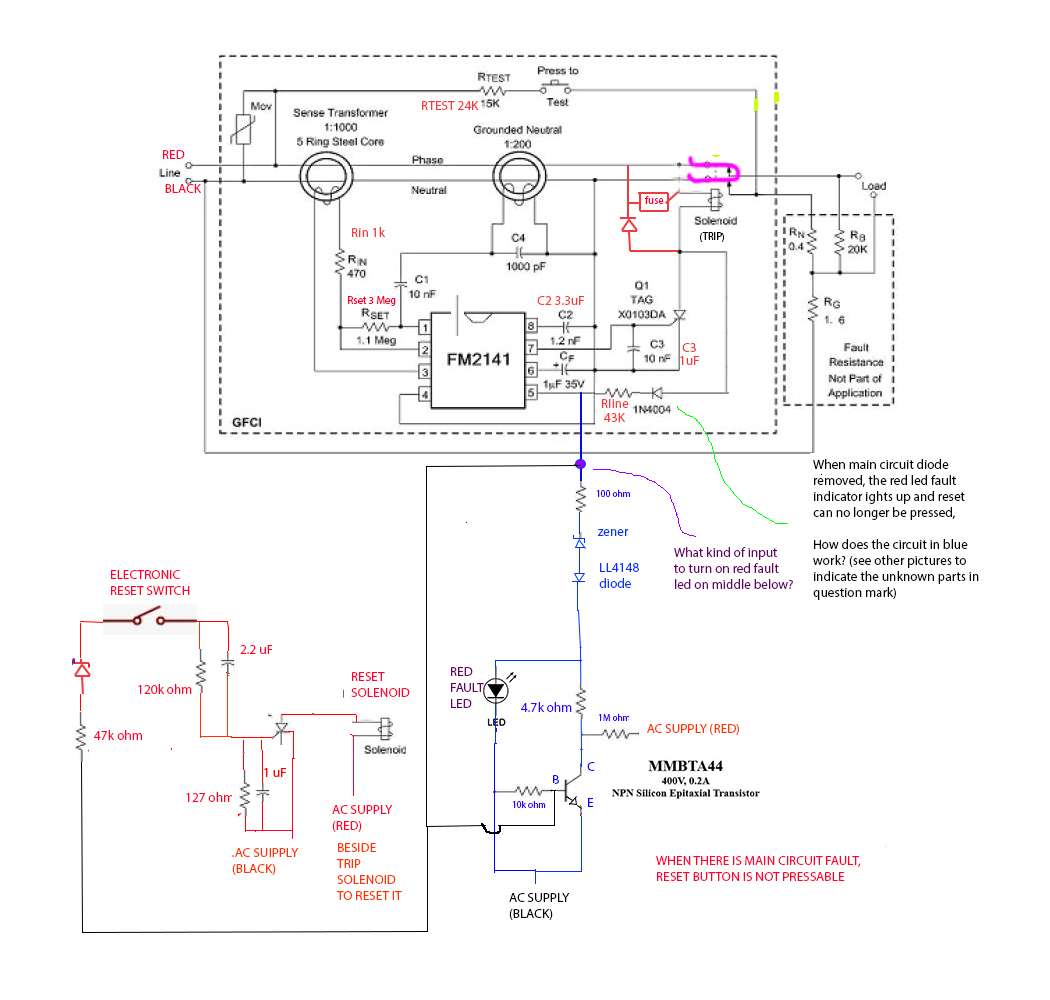190121-1111 EST
tersh:
Since you have now run the experiment where no current flows thru the current transformer this may imply that there is capacitive coupling between the current transformer primary leads and the secondary. If this is what is happening, then it would be because the current transformer lacks an electrostatic shield between primary and secondary.
I could try some experiments on your circuit.
About your LED fault circuit. There just has to be some adequate current limiting to the transistor base emitter circuit. If not the transistor would be destroyed.
.
.
gar, I was discussing with people at this thread https://forums.mikeholt.com/showthread.php?t=196709&page=4 about nuisance GFCI tripping and I got confused about something when rethinking it.

Remember I applied the ac input power to the load side (in violet lines above top right portion) and it still tripped leaving the appliance still on (because it was connected directly to the ac source) yet the relays and contacts open removing power to all the circuit.
But the input side is open. Can transients work like that where even if the ends are opened. It could still send signal via the sense coil enough to disturb it? But there should no voltages transferred since the ends are opened, no? Maybe we can imagine the open lines become like an antenna? But can transients travel via antennae?

